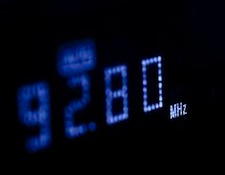It’s the time of year for saving money!

When I moved to the foothills of Boulder, Colorado, from Boston, Massachusetts, in 1991 I knew that my FM radio reception (and listening habits) would change. I went from great reception, where I never needed anything more than a good indoor antenna, to multipath hell in the foothills of the Rocky Mountains. I also went from having two superb public radio stations and at least a half dozen college radio stations to one local station and two regional public radio stations.
During the ensuing years I tried to optimize my FM experience by adding a FM roof antenna and a Magnum Dynalab MD-205 Signal Sleuth signal booster. The best I was able to achieve was three out of five bars on my Magnum Dynalab Etude tuner, in mono. Stereo was not even an option.
Naturally my time spent listening to FM went from often to almost never. And that didn’t change until three years ago when I upped my Internet service to the point where I could get streaming sources without interruptions. Within a couple of weeks I was listening to not only all my old fave stations from Boston, but also some wonderful FM stations in places like Minneapolis and San Francisco.
Sure, Internet radio can be disappointing. Any station that broadcasts at bit-rates lower than 64 KBS is basically unlistenable due to information loss and phase issues. My local community station, KGNU broadcasts at 128 KBS, which translates to WAY better sound than I can receive over the airwaves. My favorite classical station from Minnesota Public Radio is good enough to actually have soundstaging, image depth, and a remarkable amount of inner detail.
And my FM tuners? All sold now, except for a vintage ’70’s Pioneer Tx-9100 that I can’t seem to part with. I simply don’t need any of them. And while I’m a special case because the FM reception in the foothills always was and always will be awful, if I lived in Boston, I’d have converted to Internet radio as well, but it would have taken me longer to make the switch.
While I won’t dispute that a well-maintained high-end analog tuner, located in a good reception area will beat Internet radio in terms of absolute sound quality, such an optimal situation is increasingly rare. For most of us, Internet radio offers better sound quality and much wider variety of musical choices than available over the air from local sources. Will DAB (digital audio broadcast) or HD radio change this? I don’t think so…






Yep. That’s about right. Pioneer’s only sin was its own success, which makes it difficult to spin arcane yarns about when their high end models are so easily available. Conversely, if they are hard to find (F-93, etc) they tend to be “run down” in comparisons for the exact same reason some other is another narrative’s Valhalla. Any TX-9xxx will get 99% of what’s possible to hear for a fraction of the fetishist rogue’s gallery. TAS said as much in 1979 and they were right. The rest is revisionist market manipulation.